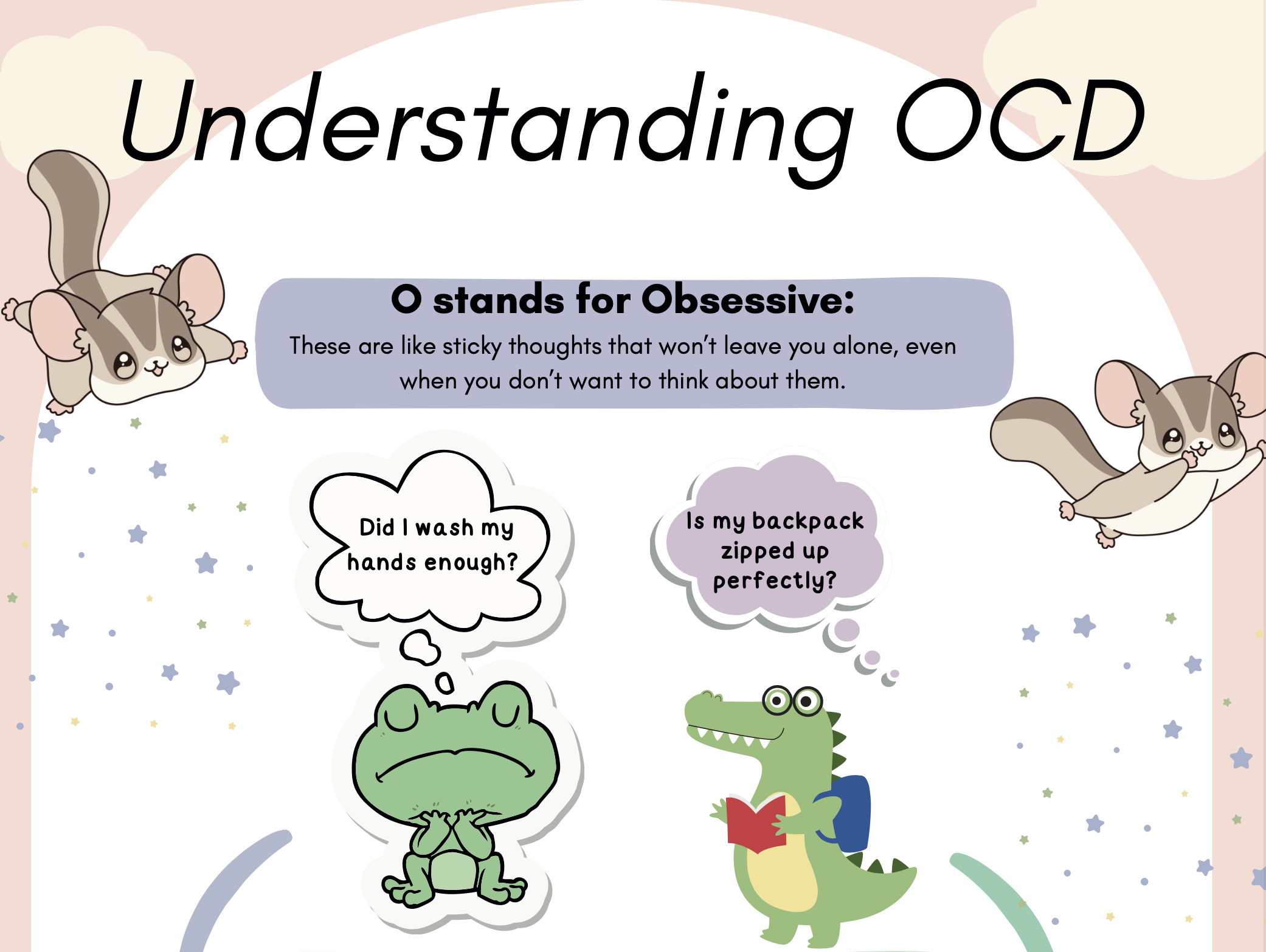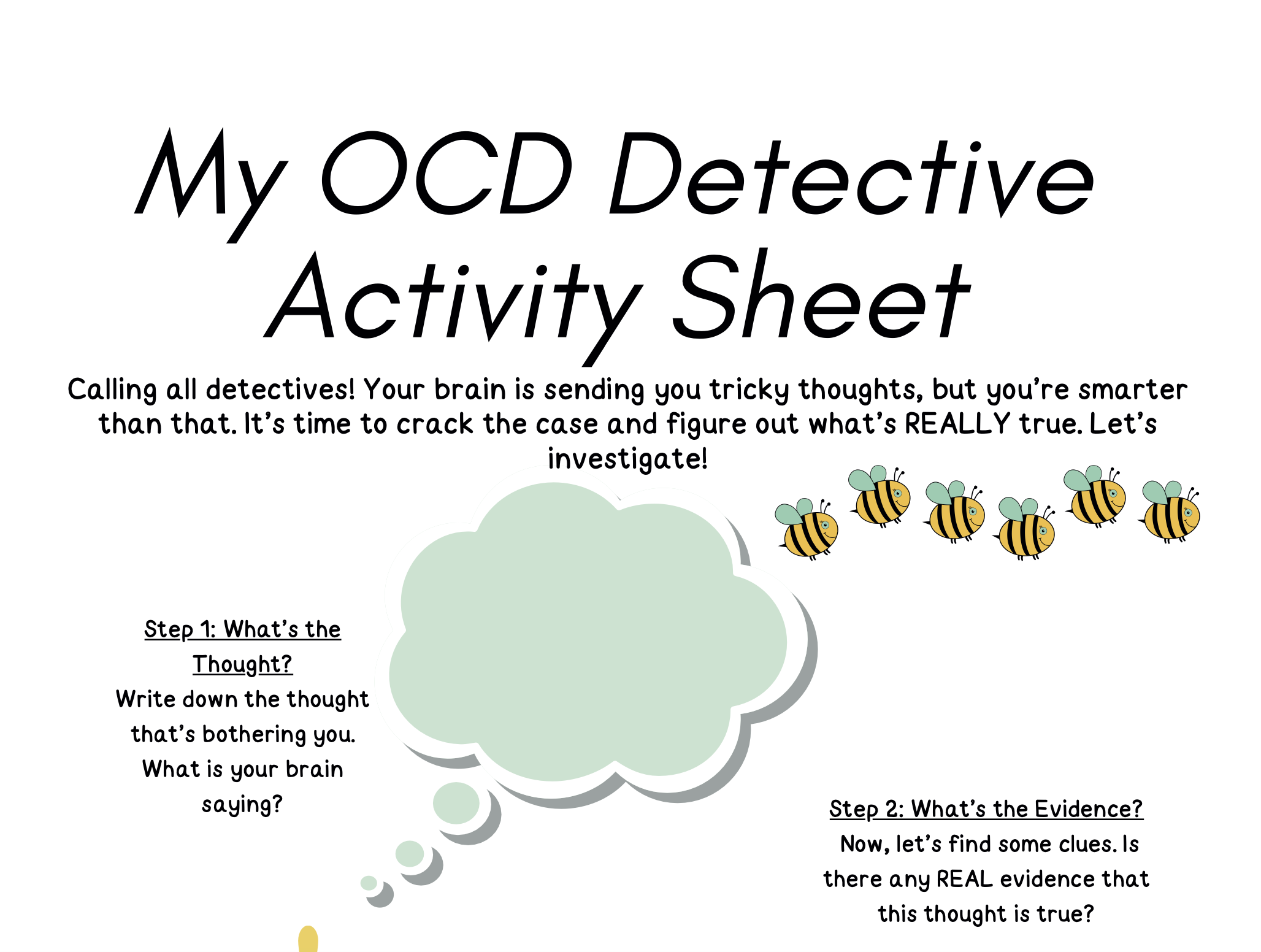 Image 1 of 2
Image 1 of 2

 Image 2 of 2
Image 2 of 2



OCD Workbook for kids
🧼🧠 What a Kids OCD Workbook Can Help With:
1. Helping Kids Understand OCD
The workbook explains obsessive-compulsive disorder (OCD) in kid-friendly language—what it is, why it happens, and that they’re not alone. It helps children understand that those upsetting thoughts and urges are part of a condition, not who they are.
2. Naming Thoughts Without Fear or Shame
Through stories, activities, and drawing exercises, kids learn to talk about their intrusive thoughts and compulsions safely—without fear of being judged or getting in trouble.
3. Separating "The OCD Voice" From Their True Self
Many OCD workbooks introduce the idea of OCD as a "bully brain," “trickster,” or “worry boss.” This helps kids externalize the disorder so they can take back control with confidence.
4. Practicing Exposure and Response Prevention (ERP)
In small, age-appropriate steps, the workbook guides children to gradually face their fears and reduce rituals—like checking, handwashing, or mental reviewing—while celebrating each little win.
5. Building Coping Skills and Resilience
Kids learn calming strategies, how to challenge OCD thoughts, and how to stay brave even when it’s hard. Many workbooks include rewards, stickers, or progress trackers to keep it positive and empowering.
6. Supporting Parents and Caregivers
Most kids' OCD workbooks include notes for adults, helping caregivers understand how to support without feeding into the OCD cycle. It becomes a team effort, not just a solo journey for the child.
👧🧒 Who It’s For:
Children aged 6–12 who show signs of OCD (or are in therapy for it)
Families looking for tools to use at home alongside treatment
Kids needing encouragement to face OCD without shame or fear
🧼🧠 What a Kids OCD Workbook Can Help With:
1. Helping Kids Understand OCD
The workbook explains obsessive-compulsive disorder (OCD) in kid-friendly language—what it is, why it happens, and that they’re not alone. It helps children understand that those upsetting thoughts and urges are part of a condition, not who they are.
2. Naming Thoughts Without Fear or Shame
Through stories, activities, and drawing exercises, kids learn to talk about their intrusive thoughts and compulsions safely—without fear of being judged or getting in trouble.
3. Separating "The OCD Voice" From Their True Self
Many OCD workbooks introduce the idea of OCD as a "bully brain," “trickster,” or “worry boss.” This helps kids externalize the disorder so they can take back control with confidence.
4. Practicing Exposure and Response Prevention (ERP)
In small, age-appropriate steps, the workbook guides children to gradually face their fears and reduce rituals—like checking, handwashing, or mental reviewing—while celebrating each little win.
5. Building Coping Skills and Resilience
Kids learn calming strategies, how to challenge OCD thoughts, and how to stay brave even when it’s hard. Many workbooks include rewards, stickers, or progress trackers to keep it positive and empowering.
6. Supporting Parents and Caregivers
Most kids' OCD workbooks include notes for adults, helping caregivers understand how to support without feeding into the OCD cycle. It becomes a team effort, not just a solo journey for the child.
👧🧒 Who It’s For:
Children aged 6–12 who show signs of OCD (or are in therapy for it)
Families looking for tools to use at home alongside treatment
Kids needing encouragement to face OCD without shame or fear